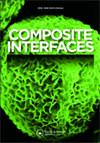生物复合材料假肢窝的热、力学和形态学影响的研究
IF 2.4
4区 材料科学
Q3 MATERIALS SCIENCE, COMPOSITES
引用次数: 0
摘要
摘要持久繁荣的主要替代方案之一是在复合材料生产中使用可生物降解的天然纤维作为增强材料,以解决全球环境问题。本研究旨在解决利用现有的和可持续的天然纤维,以防止伤害从事假肢骨臼制造的人,同时保持骨臼的强度。采用真空模塑法制备了天然纤维增强复合材料膝上假体窝。亚麻、大麻、碳、单丝和玻璃是使用的材料。为了评估基体与纤维之间的接触程度,使用了傅里叶变换红外(FTIR)、扫描电子显微镜(SEM)、差示扫描量热法(DSC)和拉伸测试。这一发现表明,在FTIR中没有看到新的峰值,这表明没有产生新的材料。这与增强剂和树脂之间的物理联系有关。SEM显微图证实了结果与FTIR的结果相吻合。DSC数据表明,随着层数的增加,玻璃化转变温度降低,天然纤维与合成纤维混合不影响结晶温度。所提出的测试已用于表征界面强度,为未来复合材料在各种工程应用中的使用提供了进一步的信息。关键词:天然纤维、纤维增强、单丝、假体、ftirsemdsc致谢作者要感谢巴格达科技大学的所有过程。披露声明作者未报告潜在的利益冲突。数据可用性声明数据可用性声明是通过调查形成的,它是发布到数据共享命令的,并且可以在开放的基础上访问,不会与doi的数据集冲突本文章由计算机程序翻译,如有差异,请以英文原文为准。
Investigation of the effect of thermal, mechanical, and morphological properties of bio-composites prosthetic socket
ABSTRACTOne of the major alternatives for lasting prosperity is the use of biodegradable natural fiber as reinforcements in the production of composites to tackle worldwide environmental problems. This study aims to address utilizing available and sustainable natural fibers to prevent injury to people engaged in the fabrication of prosthetic limb sockets while maintaining socket strength. An above-the-knee prosthetic socket of natural fiber-reinforced composites was prepared via the vacuum molding method. Linen, hemp, carbon, monofilament, and glass are the materials utilized. For assessing the degree of contact between the matrix and fibers, Fourier transform infrared (FTIR), scanning electron microscopy (SEM), differential scanning calorimetry (DSC), and tensile tests were utilized. The finding shows that no novel peak was seen in the FTIR, which indicates no new material was produced. It’s related to the physical link between reinforcements and resin. SEM micrographs confirmed that the results corroborated those from the FTIR. DSC data indicated that as the number of layers rose, the glass transition temperature decreased, and mixing natural fibers with synthetics did not affect crystallization temperatures. The proposed tests have been conducted to characterize the interfacial strength, providing further information for the futuristic use of composites in various engineering applications.KEYWORDS: Natural fiberlinenhempmonofilamentprostheticFTIRSEMDSC AcknowledgementsThe authors would like to thank all the processes at the University of Technology–Baghdad.Disclosure statementNo potential conflict of interest was reported by the author(s).Data availability statementIt was formed through the investigation as are issue to a data-sharing order and reachable on an open basis that does not clash datasets with DOIs
求助全文
通过发布文献求助,成功后即可免费获取论文全文。
去求助
来源期刊

Composite Interfaces
工程技术-材料科学:复合
CiteScore
5.00
自引率
3.80%
发文量
58
审稿时长
3 months
期刊介绍:
Composite Interfaces publishes interdisciplinary scientific and engineering research articles on composite interfaces/interphases and their related phenomena. Presenting new concepts for the fundamental understanding of composite interface study, the journal balances interest in chemistry, physical properties, mechanical properties, molecular structures, characterization techniques and theories.
Composite Interfaces covers a wide range of topics including - but not restricted to:
-surface treatment of reinforcing fibers and fillers-
effect of interface structure on mechanical properties, physical properties, curing and rheology-
coupling agents-
synthesis of matrices designed to promote adhesion-
molecular and atomic characterization of interfaces-
interfacial morphology-
dynamic mechanical study of interphases-
interfacial compatibilization-
adsorption-
tribology-
composites with organic, inorganic and metallic materials-
composites applied to aerospace, automotive, appliances, electronics, construction, marine, optical and biomedical fields
 求助内容:
求助内容: 应助结果提醒方式:
应助结果提醒方式:


